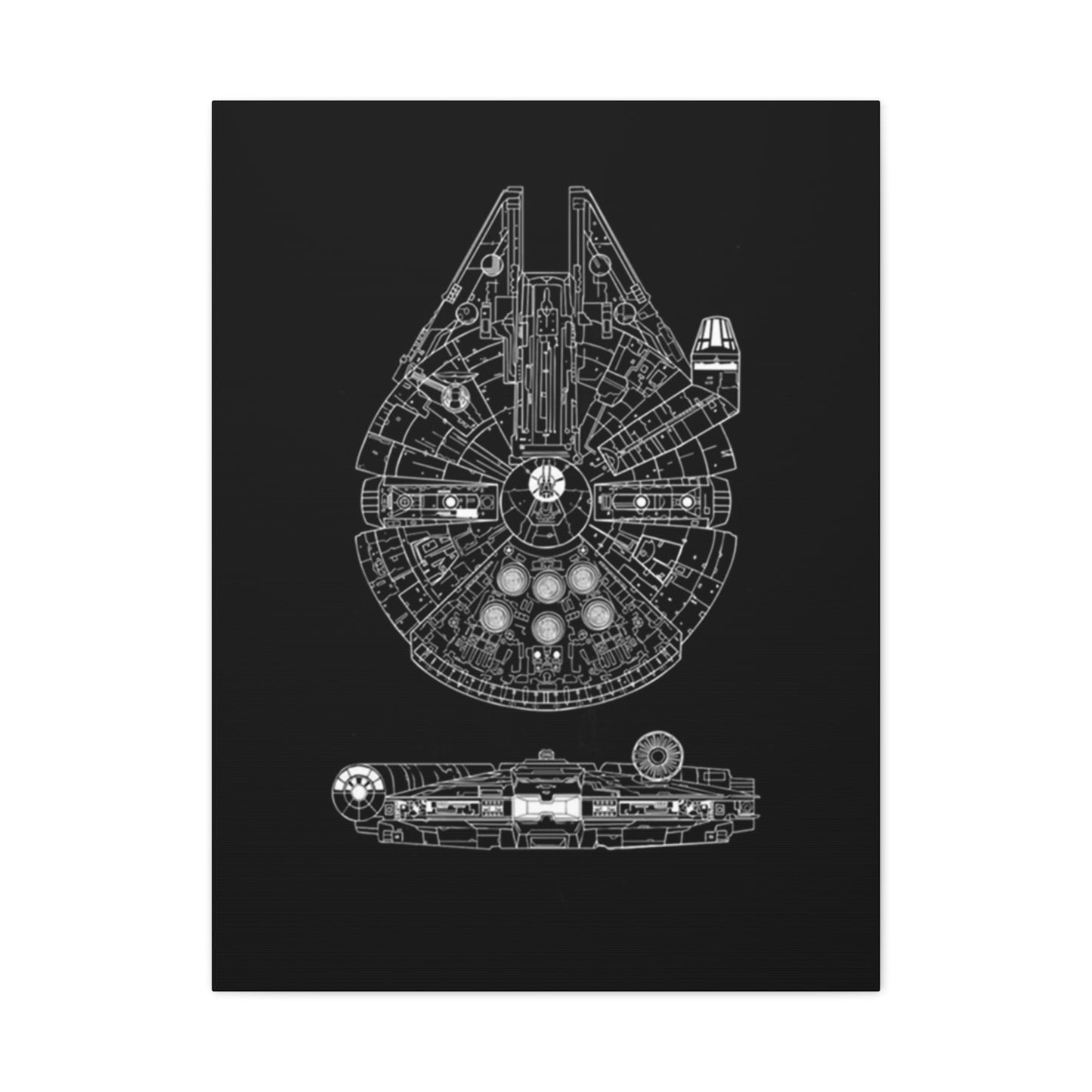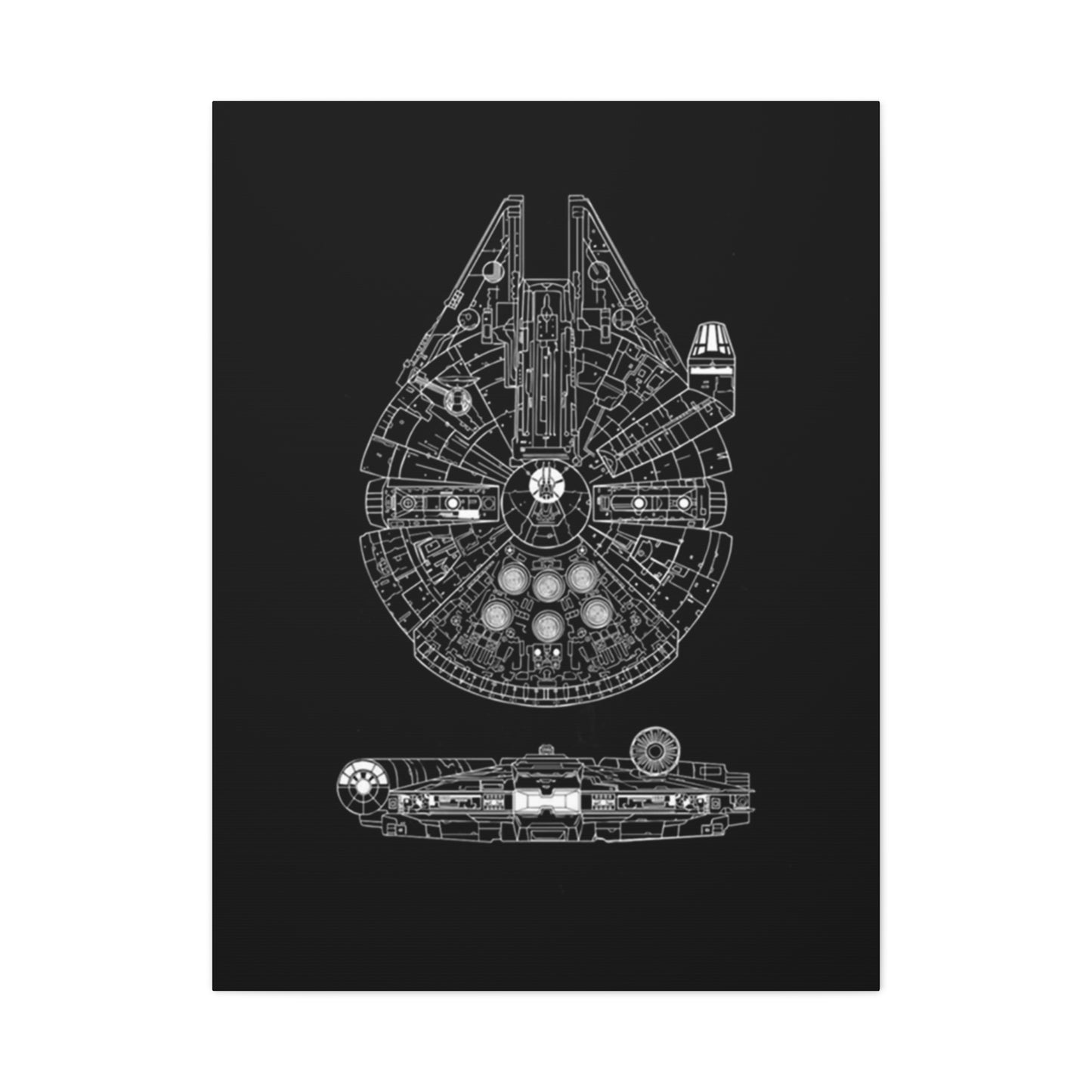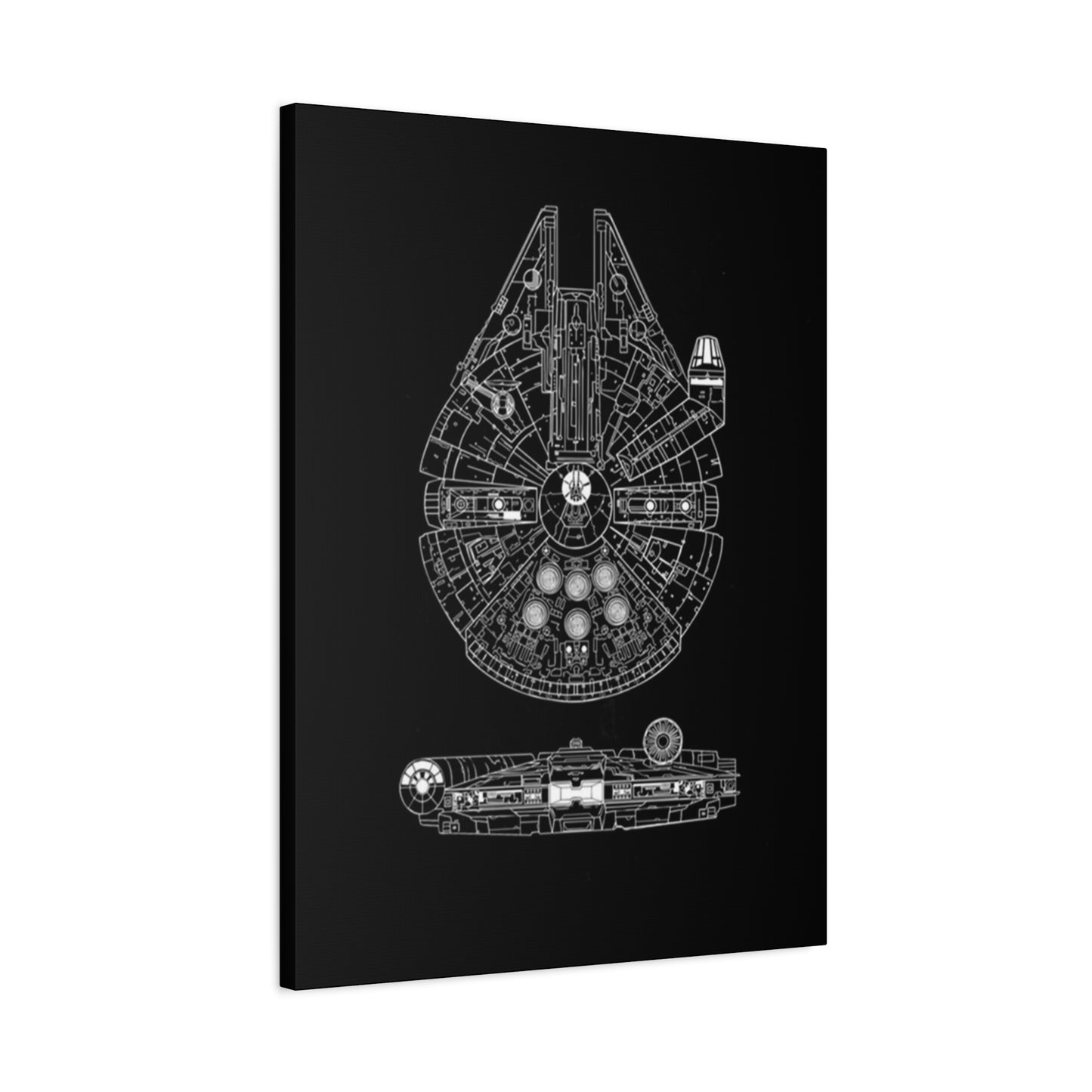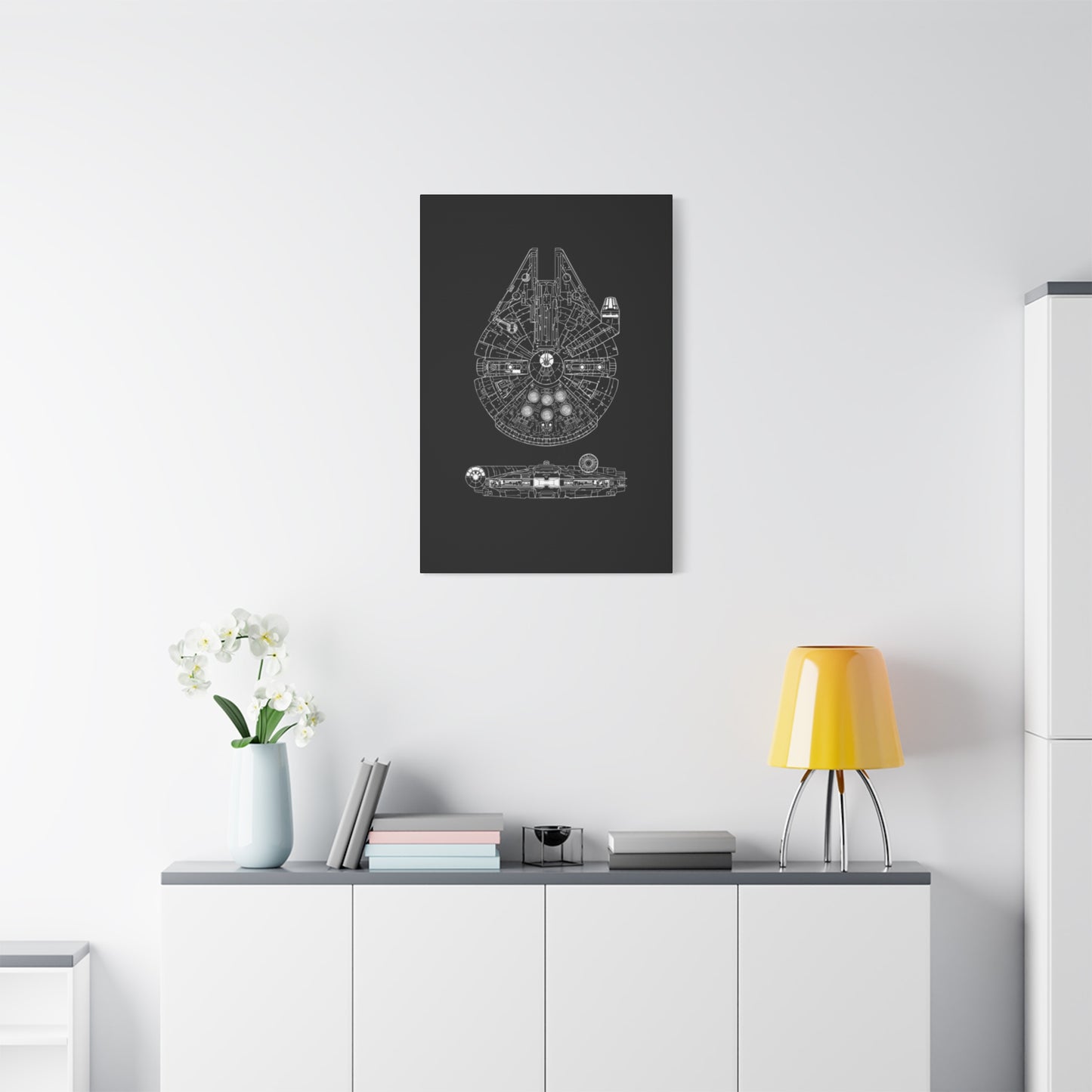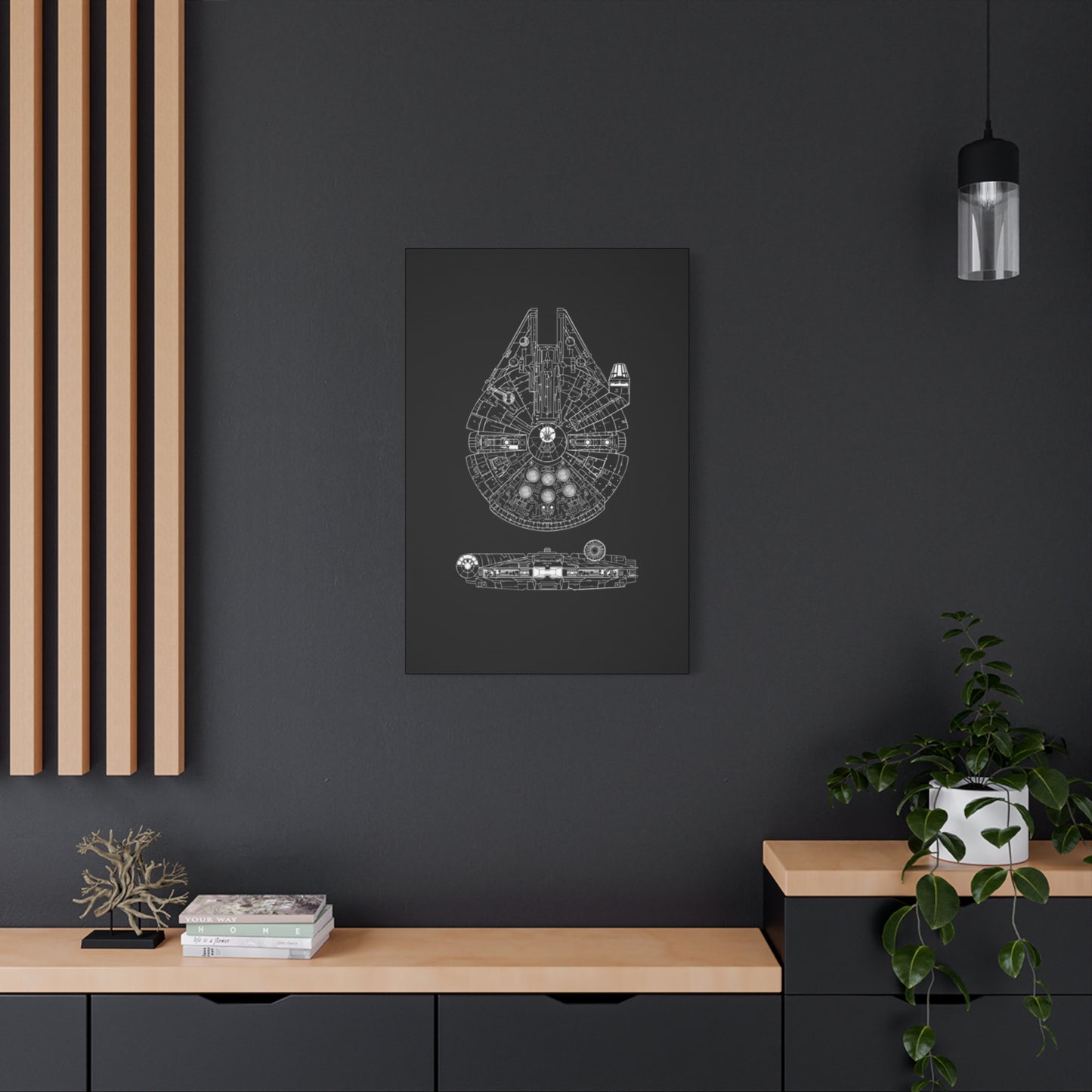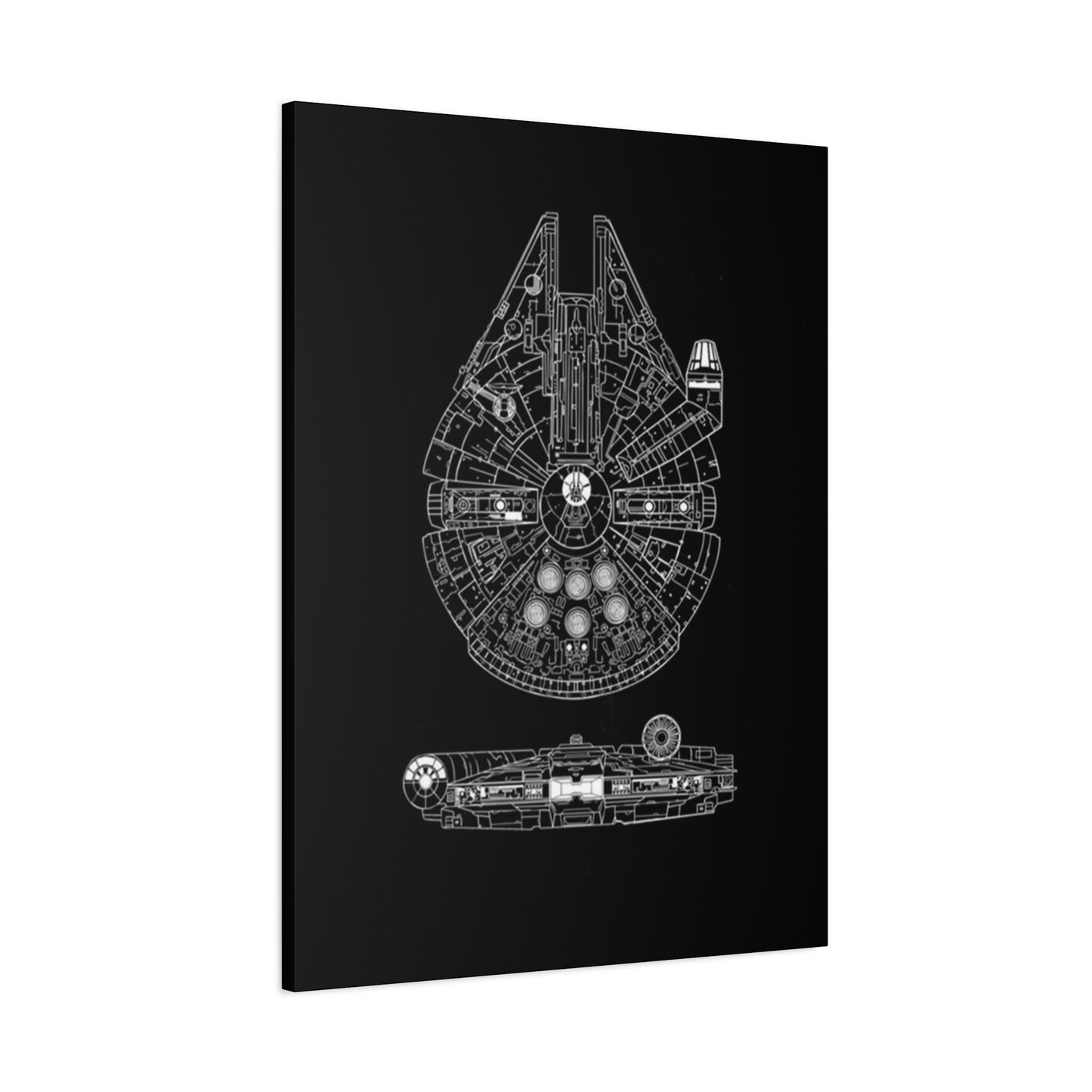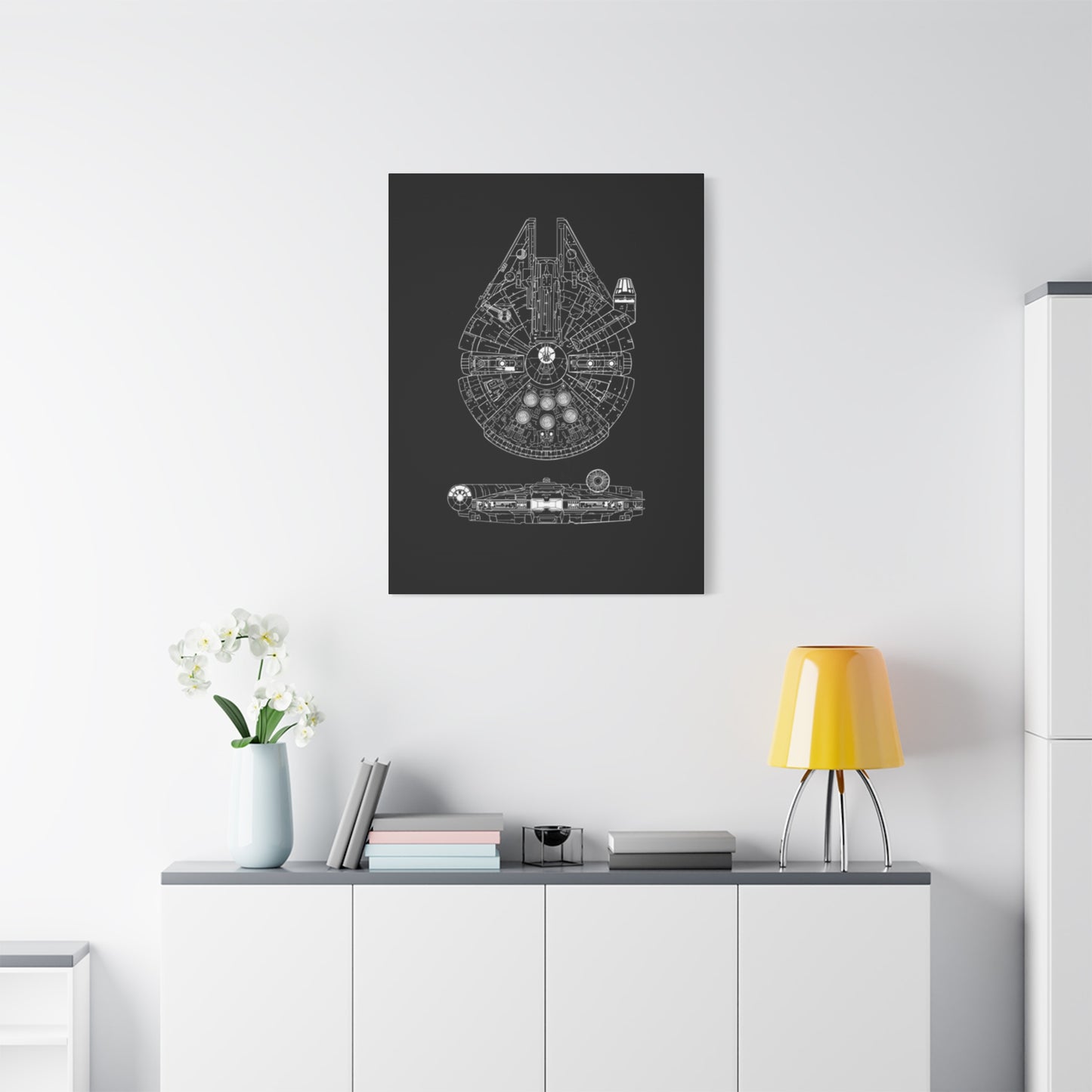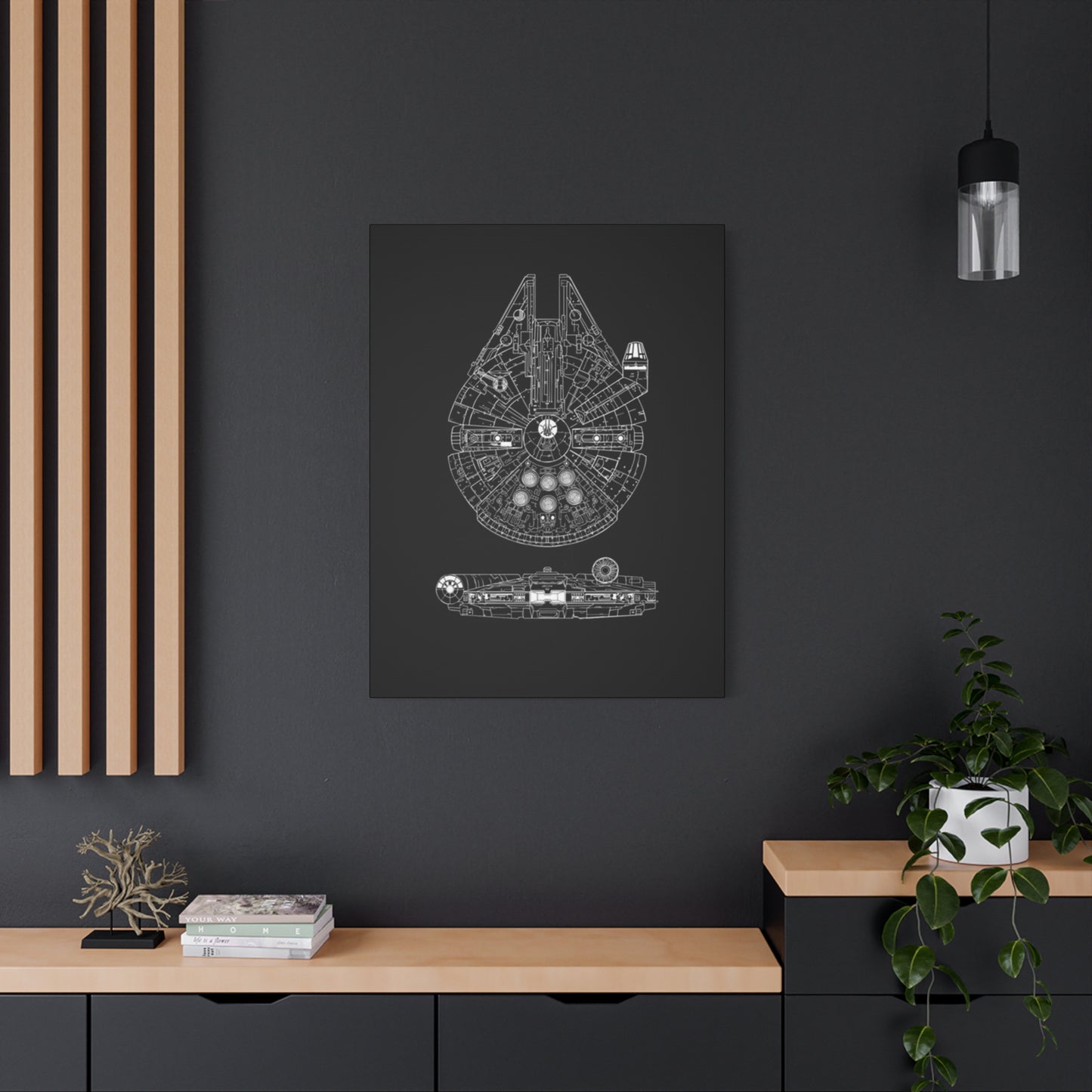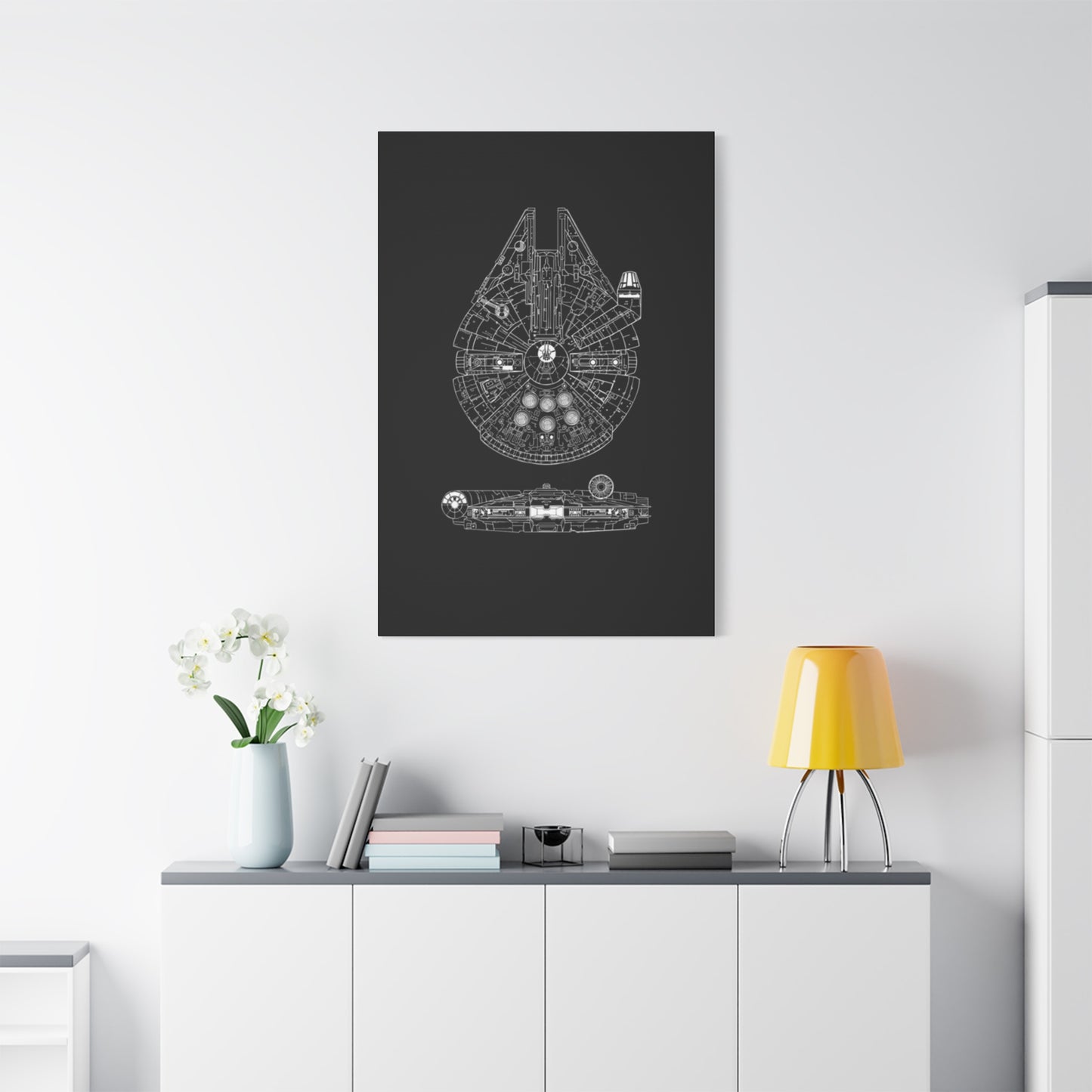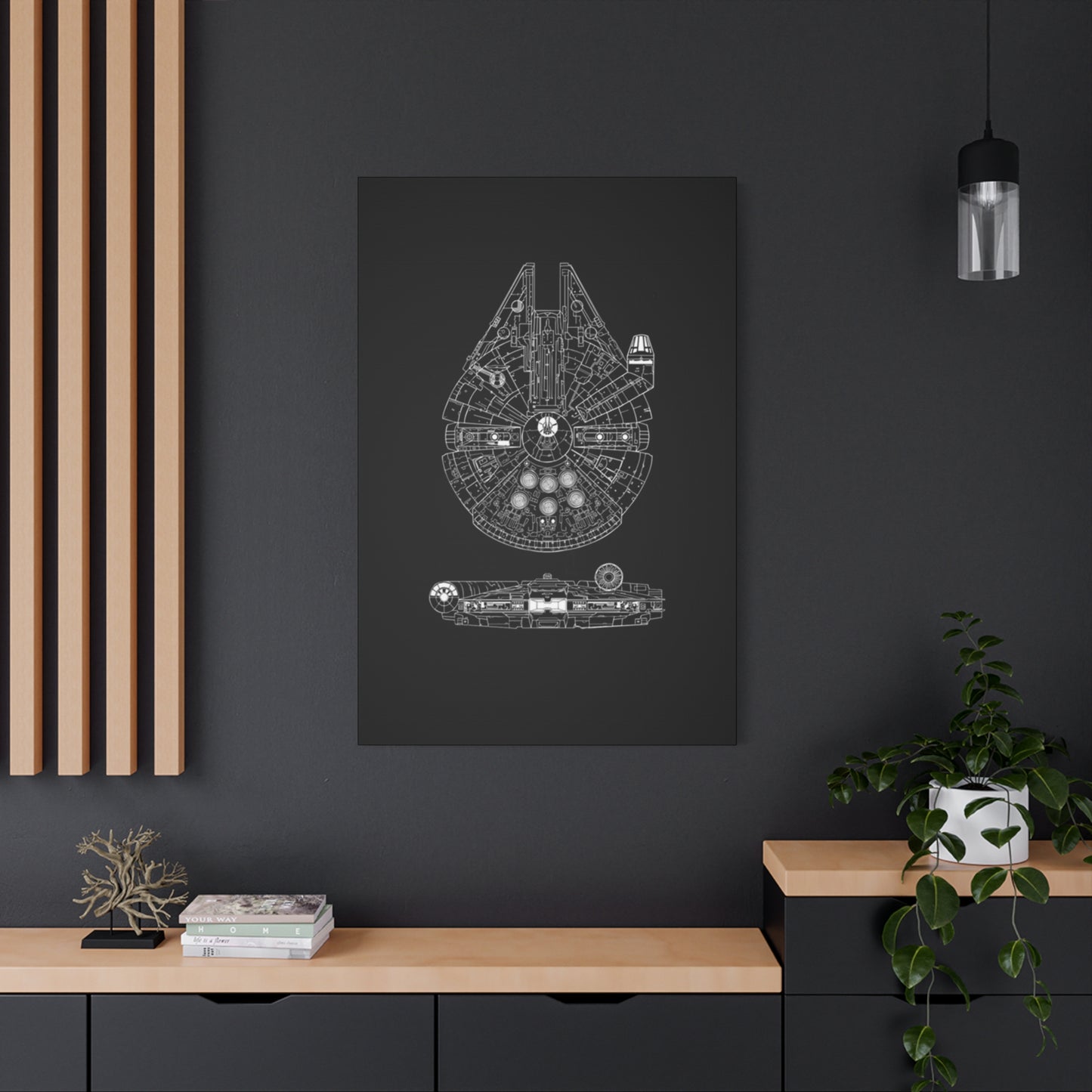The Best Ways to Decorate with Star Wars Spaceship Wall Art for a Galactic Touch
The universe of Star Wars has captivated audiences for decades, and now fans can bring that celestial magic directly into their living spaces through carefully curated spaceship wall art. From the sleek lines of X-Wing fighters to the imposing presence of Star Destroyers, these artistic representations offer more than mere decoration. They serve as portals to a galaxy far, far away, transforming ordinary rooms into extraordinary spaces that celebrate one of cinema's most beloved franchises. Whether you're a lifelong enthusiast or newly discovering the saga, incorporating these vessels into your interior design creates an atmosphere that sparks imagination and conversation.
The appeal of incorporating spacecraft imagery into home decor extends beyond simple fandom. These pieces represent engineering marvels, design excellence, and storytelling power. Each vessel carries its own narrative weight, from heroic Rebel Alliance fighters to the imposing might of Imperial forces. When selecting artwork featuring these iconic ships, you're not just choosing decoration but embracing symbols of adventure, courage, and the eternal struggle between light and darkness. The visual impact of these pieces can anchor a room's aesthetic while providing endless fascination for viewers who appreciate both artistic merit and cinematic history.
Modern printing technologies and artistic techniques have elevated spaceship-themed artwork to gallery-worthy status. High-resolution prints capture intricate details of ship designs, from weathered hull plating to glowing engine arrays. Canvas treatments add texture and depth, while metal prints offer contemporary sophistication. The variety of available styles means collectors can find pieces that align perfectly with their personal taste and existing decor schemes. Whether preferring photorealistic renderings, abstract interpretations, or technical blueprint presentations, the current market offers unprecedented selection for those seeking to celebrate these legendary vessels.
Epic Spacecraft Artwork for Science Fiction Enthusiasts
Science fiction enthusiasts seeking wall art that captures the essence of space opera grandeur will find endless inspiration in artwork featuring legendary spacecraft. These pieces serve multiple purposes within a home environment, functioning as focal points, conversation starters, and expressions of personal identity. The theatrical nature of these designs makes them particularly effective in spaces where bold statements are welcome, such as entertainment rooms, home offices, or personal sanctuaries dedicated to hobbies and interests.
The most compelling artwork in this category balances technical accuracy with artistic interpretation. Skilled artists study original production designs, concept sketches, and on-screen appearances to ensure authenticity while adding their unique creative vision. This approach results in pieces that satisfy hardcore fans' desire for accuracy while offering fresh perspectives that make the artwork feel contemporary and relevant. Some artists emphasize battle damage and weathering, telling stories of countless missions through visual details. Others highlight the elegant engineering and purposeful design that makes each vessel instantly recognizable even in silhouette.
Scale plays a crucial role in the impact of spacecraft artwork. Larger pieces command attention and can define the character of an entire room, while smaller prints work beautifully in grouped arrangements or as complementary elements within broader gallery walls. The subject matter itself often dictates ideal sizing. Massive capital ships like Star Destroyers benefit from generous dimensions that convey their overwhelming scale, while single-pilot fighters can be effective at various sizes depending on composition and framing choices. Consider the viewing distance and surrounding context when selecting dimensions to ensure the artwork achieves its intended effect.
Color palettes in spacecraft artwork range from vibrant action scenes filled with laser fire and explosions to moody, atmospheric compositions that emphasize the loneliness of space. Battle scenes typically feature bright oranges, reds, and electric blues that create energy and movement, making them ideal for spaces where activity and excitement are appropriate. Conversely, ships shown against star fields or nebulae often employ deeper, more contemplative color schemes that work well in relaxation areas or spaces intended for focused work. The emotional tone created by color choices should align with the room's purpose and the atmosphere you wish to cultivate.
Material selection significantly impacts both the appearance and longevity of spacecraft artwork. Traditional paper prints offer affordability and ease of framing, making them accessible entry points for collectors. Canvas prints provide texture and a gallery-quality appearance without requiring glass, creating a more casual, approachable aesthetic. Metal prints deliver stunning vibrancy and modern sophistication, with colors that seem to glow from within the surface. Wood-mounted prints add organic warmth that can bridge the gap between futuristic subject matter and natural interior elements. Each material choice offers distinct advantages depending on your priorities regarding appearance, durability, and maintenance requirements.
Framing options further customize the presentation of spacecraft artwork. Simple black frames create clean, contemporary displays that keep focus on the image itself, working well with minimalist or modern decor schemes. Metallic frames in silver or gunmetal tones complement the technological subject matter while adding elegance. For vintage or retro-styled prints, distressed wood frames or ornate traditional frames can create interesting juxtapositions that highlight the timeless appeal of these designs. Frameless mounting techniques, including floating mounts and edge-to-edge canvas wraps, offer sleek alternatives that emphasize the artwork as pure visual experience.
The positioning of spacecraft artwork within a room deserves careful consideration. Placing a dramatic piece above a sofa or entertainment center creates a natural focal point that anchors seating arrangements and guides the eye. In home offices, inspirational imagery positioned within the line of sight can provide mental breaks and motivation during work sessions. Hallways and transitional spaces benefit from sequential arrangements that create narrative flow, perhaps depicting different vessels or stages of a battle. Bedroom installations should balance personal passion with restful aesthetics, possibly reserving more intense battle scenes for other areas while choosing contemplative space scenes for sleeping quarters.
Lighting dramatically affects the perception of spacecraft artwork. Direct spotlighting creates gallery-style presentation and draws attention to specific pieces, particularly effective for showcasing premium acquisitions or centerpiece displays. Ambient lighting allows artwork to integrate more subtly into the overall room atmosphere, contributing to the environment without dominating it. For prints with dark backgrounds depicting space scenes, adequate lighting prevents them from disappearing into shadows while preserving the dramatic contrast between dark space and illuminated ships. Consider adjustable lighting systems that allow mood changes depending on activities and time of day.
Legendary Freighter Artwork That Commands Attention
Few vessels in cinematic history possess the instant recognition and emotional resonance of the legendary Corellian freighter. This ship represents freedom, adventure, and unlikely heroism, making artwork featuring it particularly meaningful for fans. Its distinctive circular shape and asymmetric design create visual interest that translates beautifully to two-dimensional art, offering artists numerous opportunities for creative interpretation. From detailed technical renderings to action-packed scenes of impossible maneuvers, representations of this beloved vessel span the full spectrum of artistic approaches.
The historical significance of this freighter within the broader narrative makes it more than just another spacecraft. It served as home, getaway vehicle, and trusted companion through decades of adventures. Artists capturing this vessel often emphasize these emotional dimensions, portraying it not as cold machinery but as a character in its own right. Weathering and imperfections in detailed renderings tell stories of countless parsec traveled and dangers narrowly escaped. These visual narratives resonate with collectors who appreciate the depth of storytelling embedded in every scoring mark and replaced panel.
Compositional approaches to freighter artwork vary widely, each offering distinct aesthetic advantages. Profile views showcase the ship's iconic silhouette, making it instantly identifiable even to casual observers. Three-quarter perspectives add depth and dynamism while revealing more of the vessel's complex geometry. Head-on compositions emphasize the forward mandibles and cockpit positioning, creating bold, graphic images with strong visual impact. Aerial or elevated views display the ship's circular shape and top-mounted sensor array, offering perspectives less commonly seen in film but fascinating in their technical clarity.
Action scenes featuring this freighter capture some of cinema's most memorable moments. Artwork depicting narrow escapes through asteroid fields conveys excitement and the pilot's legendary skill. Pieces showing the ship making the jump to lightspeed capture a moment of transformation and escape, with stars streaking into lines around the accelerating vessel. Battle scenes portray the freighter holding its own against overwhelming odds, gun turrets blazing while evading enemy fire. These dynamic compositions work particularly well in entertainment spaces and game rooms where energy and excitement enhance the atmosphere.
More contemplative artwork presents the freighter at rest or in transit through peaceful space, emphasizing its role as sanctuary and home. These quieter compositions suit spaces intended for relaxation or reflection, such as reading nooks, bedrooms, or meditation areas. The ship might be shown docked at a space station, undergoing repairs that hint at past adventures, or cruising through hyperspace in that otherworldly tunnel of light. Such pieces remind viewers that adventure includes moments of peace and that even the fastest ship in the galaxy needs occasional rest.
Technical blueprint presentations of the freighter appeal to enthusiasts who appreciate engineering and design. These pieces showcase cutaway views revealing internal systems, deck plans showing the layout of living quarters and cargo holds, or exploded diagrams displaying how components fit together. The technical aesthetic works beautifully in offices, workshops, or any space where analytical thinking and problem-solving occur. These blueprints can be purely functional in appearance or stylized with aged paper textures, coffee stains, and handwritten annotations that suggest they're working documents from a galaxy far away.
Limited edition prints and artist proofs of freighter artwork hold particular appeal for serious collectors. These pieces often feature enhanced details, special finishing techniques, or signatures and numbering that verify their exclusivity. Investing in limited editions can provide satisfaction beyond mere ownership, connecting collectors with specific artists and their interpretations. The secondary market for rare freighter artwork has shown remarkable strength, with certain pieces appreciating significantly over time, though aesthetic enjoyment and personal connection should remain primary considerations in acquisition decisions.
Customization options allow collectors to personalize freighter artwork to reflect their specific preferences. Some artists accept commissions for custom scenes, alternative color schemes, or specific moments from the films. Digital artists can modify existing designs, adjusting backgrounds, lighting, or details to create unique versions. Adding personal touches, such as placing the ship against a backdrop meaningful to the collector or incorporating specific battle damage patterns, transforms generic prints into personal treasures that hold deeper significance.
Legendary Starfighter Artwork for Your Living Space
Single-pilot fighters represent the romanticized ideal of space combat, putting individual skill and courage against overwhelming odds. Artwork featuring these agile vessels captures the excitement of dogfights and the grace of these purpose-built machines. The variety of fighter designs across different factions provides collectors with numerous options, each with distinctive visual characteristics and symbolic meanings. Rebel fighters embody hope and resistance, while Imperial fighters represent order and intimidation, allowing collectors to align their choices with personal values or simply aesthetic preferences.
The X-Wing fighter stands as perhaps the most iconic single-seat spacecraft in cinematic history. Its distinctive foils that split into attack position create a instantly recognizable silhouette that translates beautifully to artwork. Artists frequently capture the moment of foil deployment, freezing that transformation that signals readiness for combat. The red squadron markings that often adorn these fighters add vibrant color pops against the white and grey hull, creating visual interest and historical connection to specific characters and missions. Four engine exhausts glowing with power convey speed and capability, while the astromech droid socket adds a touch of personality and companionship to what might otherwise be sterile machinery.
Artwork showcasing these Rebel fighters often emphasizes their underdog status and the skill required to pilot them effectively. Scenes depicting trench runs recall the most famous mission in the original film, with the fighter navigating narrow channels while evading enemy fire. Formation flying images show squadron unity and coordination, creating diagonal lines and patterns that guide the eye across the composition. Solo fighters against massive capital ships emphasize David-versus-Goliath themes that resonate with anyone who has faced seemingly insurmountable challenges. These narrative elements embedded in the artwork create emotional connections beyond simple visual appreciation.
Imperial TIE fighters offer contrasting aesthetic possibilities with their distinctive hexagonal wing panels and ball-shaped cockpits. The stark black and grey color scheme creates dramatic silhouettes, particularly effective against lighter backgrounds. Their association with antagonistic forces doesn't diminish their visual appeal or the admiration many feel for their streamlined design philosophy. Artwork featuring TIE fighters often emphasizes their swarm tactics, with multiple ships creating geometric patterns that showcase Imperial military precision. The iconic roar of their engines, while silent in still images, seems to echo in viewers' minds when viewing well-executed TIE fighter artwork.
Advanced fighter variants provide additional options for collectors seeking something beyond basic models. The A-Wing's arrowhead profile and incredible speed make for dynamic compositions showing the sleekest fighter cutting through space. The B-Wing's unusual asymmetric design creates visual puzzles that fascinate viewers and demonstrate alien engineering philosophies. Interceptors and specialized variants appeal to enthusiasts who appreciate deep lore knowledge and want representations of rarer vessels that showcase their expertise. Each fighter type attracts different collector demographics based on aesthetic preferences and character affiliations.
Battle scenes featuring multiple fighter types create the most complex and visually rich compositions. Space battles with dozens of ships engaged in swirling combat patterns offer something new with each viewing, allowing observers to follow different elements and discover previously unnoticed details. The contrast between fighter types, maneuvering styles, and weapon effects creates visual dynamism that energizes spaces. These busy compositions work best at larger scales where details remain distinguishable and the full scope of the battle can be appreciated. They serve as excellent conversation pieces, with guests finding favorite elements or debating tactical situations depicted.
Solo fighter portraits offer simpler, more focused alternatives that highlight the beauty of individual designs. These pieces work well in smaller formats or as parts of larger gallery walls where multiple fighters can be displayed together without competing within single compositions. The cleaner presentations suit minimalist aesthetics and spaces where visual calm is preferred over energetic complexity. Detail shots focusing on specific fighter components, such as engine clusters, weapon systems, or cockpit areas, appeal to technical enthusiasts and create interesting variations within themed collections.
The context in which fighters are shown significantly impacts the emotional tone of artwork. Fighters emerging from hyperspace into battle convey arrival and commitment to action. Ships returning to base, possibly showing battle damage, tell stories of survival and mission completion. Fighters in launch sequences capture anticipation and preparation. Parked fighters in hangar bays emphasize the hardware aspect and allow for detailed examination without combat distractions. Each contextual choice creates different viewing experiences and suits different room purposes and personal preferences.
Contemporary Spacecraft Canvas Art for Modern Interiors
Canvas prints of spacecraft imagery bridge the gap between fan enthusiasm and sophisticated home decor. The texture and finish of canvas elevate these images beyond poster status, granting them artistic legitimacy that satisfies aesthetic sensibilities while celebrating beloved subject matter. Gallery-wrapped canvases, where the image extends around frame edges, create complete visual experiences that don't require additional framing, offering cost savings and design flexibility. The absence of reflective glass makes canvas particularly suitable for rooms with complex lighting situations or where glare might compromise visibility.
Color treatment in canvas spacecraft art significantly impacts its suitability for modern interiors. Full-color renderings maintain connection to source material and deliver the visual punch that many collectors desire. However, modified color palettes can help artwork integrate into specific design schemes. Desaturated versions with muted tones suit contemporary spaces favoring neutral color stories. Selective colorization, where most of the image appears in greyscale with strategic color highlights, creates dramatic focal points while maintaining overall restraint. Monochromatic treatments in single color families allow spacecraft art to coordinate with room palettes while retaining their iconic forms.
Abstract and interpretive approaches to spacecraft canvas art appeal to collectors seeking pieces that function as art first and fandom expression second. These works might reduce ships to essential geometric forms, exploring pure shape and composition. Expressionist techniques apply loose, emotional brushwork that conveys feeling rather than precise detail. Cubist-inspired pieces fracture spacecraft into multiple simultaneous perspectives, creating visual complexity and intellectual interest. These artistic approaches allow sophisticated integration of geek culture into refined spaces without compromising design integrity.
Mixed media canvas works incorporate physical elements beyond printed imagery, adding dimensional interest and tactile qualities. Some artists apply paint over printed bases, highlighting specific areas or adding texture that catches light and creates viewing variations from different angles. Others incorporate metallic foils, creating reflective accents on engine exhausts or weapon fire. Embedded LED lighting transforms static images into dynamic displays, with ships' engines, weapons, or cockpit lights actually glowing. These enhanced pieces command premium prices but deliver unique visual experiences impossible with standard prints.
The size flexibility of canvas printing allows customization to fit specific spaces perfectly. Small canvases work beautifully in grouped arrangements, perhaps showing different ships or sequential battle moments. Medium sizes suit most residential walls, providing presence without overwhelming rooms. Large-scale canvases create statement installations that define spaces and demonstrate serious commitment to the aesthetic. Multi-panel arrangements, where single images span multiple canvases, add architectural interest and can be configured to fit irregular wall spaces or navigate around obstacles like windows and doorways.
Canvas depth options affect both appearance and price points. Standard thin-wrap canvases, typically less than an inch deep, maintain lower profiles and work well where space is limited or where artwork will be partially recessed into wall niches. Deeper gallery-wrap canvases, ranging from one to two inches or more, create more substantial presences and cast shadows that add dimensionality. The thicker the canvas, the more substantial it feels as an art object rather than merely a printed image. This psychological impact shouldn't be underestimated when considering how artwork will be perceived and valued within your space.
Protective coatings applied to canvas spacecraft art extend longevity and maintain appearance quality over years of display. UV-resistant treatments prevent fading from sunlight exposure, crucial for pieces displayed in bright rooms or near windows. Water-resistant coatings protect against humidity and incidental moisture, important in bathrooms, kitchens, or humid climates. Anti-dust treatments reduce maintenance requirements, keeping colors vibrant with minimal cleaning. When investing in quality canvas art, these protective features provide long-term value that justifies initial costs.
Premier Spacecraft Wall Decoration Selections
The market for spacecraft-themed wall decoration has expanded dramatically, offering options ranging from budget-friendly prints to investment-grade fine art. Understanding what separates exceptional pieces from mediocre offerings helps collectors make informed decisions that deliver satisfaction and value. Quality considerations include image resolution, color accuracy, material durability, and artistic merit. The best pieces succeed on multiple levels, functioning as both fan tributes and legitimate art that would impress even viewers unfamiliar with the source material.
Image resolution determines how much detail survives printing and how closely viewers can examine artwork without encountering pixelation or quality degradation. Professional spacecraft art uses high-resolution source files that maintain clarity even at large print sizes. When evaluating potential purchases, examine detail areas like panel lines, weathering effects, and text or graphics on ship hulls. These fine elements should appear crisp and intentional rather than blurred or jagged. Reputable sellers provide resolution specifications, and consulting these numbers relative to final print dimensions helps predict quality outcomes.
Color accuracy ensures the artwork faithfully represents the artist's vision and the iconic color schemes fans expect. Cheap printing processes sometimes produce colors that appear washed out, oversaturated, or incorrectly shifted from intended hues. This particularly matters with spacecraft art where specific paint schemes carry recognition value and emotional associations. Red squadron markings should be properly vibrant, Imperial grey should look appropriately menacing, and space backgrounds should display rich blacks with appropriate star field density. Reviewing customer photos when available provides reality checks against potentially idealized promotional images.
Material quality directly impacts artwork longevity and ongoing appearance. Paper prints should use thick, archival-grade stock that resists yellowing and degradation over time. Canvas should be substantial enough to avoid sagging or visible texture irregularities. Metal prints require proper coating application that protects against scratching and corrosion. Frame components should be solid and well-constructed, with clean joints and secure hanging hardware. While premium materials increase costs, they deliver better value long-term than cheap alternatives requiring early replacement.
Artistic interpretation separates truly exceptional spacecraft artwork from simple screen captures or traced references. The best artists bring personal vision while respecting source material, finding fresh angles, unique lighting scenarios, or compositional innovations that make familiar subjects feel new. They might imagine scenes never shown on screen, depict famous moments from unexpected viewpoints, or emphasize aspects of ship design that typically receive less attention. This creative contribution elevates artwork beyond mere replication, creating pieces with lasting interest that reward repeated viewing.
Edition size and exclusivity affect both price and collectibility. Open edition prints can be reproduced indefinitely, making them affordable but less appealing to serious collectors. Limited editions capped at specific numbers create scarcity that supports value retention and appreciation. Artist proofs and one-of-one pieces represent ultimate exclusivity, appealing to collectors who prioritize rarity. For most decorators, open editions provide perfectly adequate quality at accessible prices, but those interested in collecting as investment or seeking unusual pieces might prioritize limited availability.
Artist reputation and portfolio strength indicate likely quality and potential future value. Established spacecraft artists with strong followings typically maintain consistent quality standards and have track records of satisfied customers. Emerging artists may offer excellent work at lower prices, though their long-term market position remains uncertain. Reviewing an artist's complete portfolio reveals their range, style consistency, and technical capabilities. Artists who produce varied, consistently strong work across multiple subjects likely bring genuine skill rather than accidentally succeeding with single pieces.
Seller reliability and customer service separate pleasant purchasing experiences from frustrating ones. Reputable sellers clearly describe products, provide accurate previews, and stand behind quality with reasonable return policies. They respond to inquiries promptly and resolve issues professionally. Customer reviews reveal patterns in shipping care, color accuracy, and post-purchase support. Purchasing spacecraft art represents investment in both the physical product and the experience of acquiring it, so seller selection deserves careful consideration alongside artwork evaluation.
Integrating Spacecraft Art into Various Room Settings
Successfully incorporating spacecraft artwork into diverse room environments requires balancing enthusiastic fandom with design coherence. The key lies in treating these pieces as legitimate art deserving thoughtful placement and integration rather than afterthoughts filling empty walls. This approach allows spacecraft imagery to enhance spaces while maintaining overall aesthetic integrity. Different room types present unique opportunities and challenges for artwork placement, with solutions varying based on room purpose, existing decor, and personal priorities regarding how prominently fan interests should feature.
Living rooms and family spaces accommodate spacecraft art particularly well, as these areas typically welcome conversation pieces and personal expression. Large-scale canvas prints work beautifully above sofas as focal points, grounding seating arrangements and providing visual interest. Gallery walls combining multiple spacecraft prints with complementary pieces create layered collections that showcase breadth of interest and design sophistication. Shelf displays alternating between framed prints and three-dimensional collectibles add depth and variety to entertainment center arrangements. The social nature of these spaces makes bold, discussion-worthy art appropriate and enjoyable.
Home offices benefit tremendously from inspirational spacecraft imagery that provides mental breaks and creativity triggers during work sessions. Positioning artwork within natural sight lines from desk areas ensures regular exposure without requiring deliberate viewing breaks. Motivational scenes showing successful missions, narrow escapes, or heroic actions can subconsciously encourage persistence through challenging work. Technical blueprints and schematic presentations complement professional environments while maintaining thematic connections. The personal nature of home offices allows more obvious fan expression than corporate environments typically permit, creating opportunities for authentic self-expression.
Bedroom installations require sensitivity to the dual purposes these spaces serve as both personal sanctuaries and sleep environments. While high-energy battle scenes might seem initially appealing, calmer compositions often prove more suitable for rooms intended to promote relaxation and rest. Spacecraft shown peacefully cruising through hyperspace, parked in quiet hangars, or silhouetted against serene planetary sunrises create atmosphere without stimulation. Positioning artwork away from direct bed sight lines prevents it from interfering with sleep while keeping it available for appreciation during waking hours. Bedrooms offer excellent venues for personal favorite pieces that might not suit more public spaces.
Entertainment and media rooms represent ideal locations for dramatic, action-packed spacecraft art. These spaces already center on visual media consumption, making cinematic artwork a natural fit. Large battle scenes complement movie-watching environments, extending the theater experience beyond screen boundaries. Positioning artwork to remain visible during media consumption creates integrated viewing experiences where room decor enhances content. Backlighting or accent lighting on spacecraft art can be synced with ambient viewing lights, creating immersive environments that fully embrace entertainment purposes.
Game rooms and hobby spaces welcome overt fan expression with enthusiasm matching the activities these rooms facilitate. Bold, colorful spacecraft art sets energetic tones appropriate for gaming sessions, tabletop campaigns, or model building. These spaces accommodate collections of multiple pieces without concerns about excessive thematic focus that might feel overwhelming in mixed-use areas. Rotating displayed pieces maintains freshness and allows extensive collections to receive regular exhibition without permanent wall commitment. The informal nature of these spaces permits experimental arrangements and playful presentations that would feel inappropriate in formal areas.
Hallways and transitional spaces offer often-overlooked opportunities for spacecraft art display. Narrow walls suit single-file arrangements of coordinated prints, creating gallery-like experiences as people move through spaces. Stairway walls accommodate ascending arrangements that follow sight lines naturally. These areas allow bold or experimental pieces that receive briefer viewing exposure, making them suitable for artworks that might feel overwhelming in spaces with extended occupancy. Sequential arrangements telling visual stories work particularly well in passages where movement naturally creates narrative progression through scenes.
Kitchen and dining areas require more careful consideration given competing functional and aesthetic priorities. Spacecraft art in these spaces works best when integrated subtly rather than dominating. Smaller prints in grouped arrangements add interest without overwhelming food-centered activities. Simplified or abstract spacecraft imagery coordinates more easily with varied color schemes and material palettes common in kitchens. Protecting artwork from cooking moisture and food particles requires strategic placement away from stoves and prep areas. When successful, these unexpected placements surprise guests and extend thematic consistency throughout homes.
Bathroom spacecraft art might seem unconventional but can work wonderfully when approached correctly. These private spaces allow playful or unusual pieces that might feel too quirky for public areas. Waterproof materials become essential, with metal prints offering ideal combinations of moisture resistance and visual appeal. Smaller scales suit typically compact bathroom dimensions while preventing artwork from conflicting with primary fixtures. The personal nature of bathrooms makes them suitable for favorite pieces that might not fit elsewhere, creating small retreats celebrating individual interests.
Nostalgic Spacecraft Artwork for Collection Enthusiasts
Vintage-styled spacecraft artwork taps into powerful nostalgia while offering distinctive aesthetic options that separate collections from contemporary digital art dominance. These pieces evoke memories of original theatrical releases, childhood toy packages, and the analog era when science fiction felt wonderfully tangible. The intentionally aged appearance creates character that pristine modern prints cannot replicate, telling visual stories of artwork that has existed through decades and adventures. Collectors drawn to retro aesthetics find these pieces integrate beautifully with vintage furniture, classic collectibles, and design schemes celebrating mid-century or 1970s sensibilities.
Reproduction vintage posters recreate original theatrical marketing materials that promoted films during initial releases. These pieces hold historical significance beyond their artistic merit, representing how the cultural phenomenon first reached audiences. Original-run posters command astronomical prices when authentic examples surface, making high-quality reproductions appealing alternatives for collectors seeking the aesthetic without investment-level expenditure. The bold graphics, dramatic compositions, and period-appropriate typography of these marketing pieces create striking displays that celebrate both the films and their cultural moment.
Weathering and distressing techniques applied to spacecraft prints create convincing vintage appearances on new artwork. Artists carefully add yellowing, edge wear, creases, and fading that suggest decades of existence. Some techniques include actual aging processes using tea staining, sun exposure, or strategic roughing, while others employ digital effects that simulate aging without physical alteration. The result creates instant antique character that suits vintage-themed collections and spaces decorated in nostalgic styles. The key to successful artificial aging lies in authenticity of technique, as poorly executed distressing appears obviously artificial and undermines the desired effect.
Retro-futurism approaches imagine how artists from past decades might have depicted spacecraft had the films existed earlier. These alternate-history pieces might show spacecraft rendered in 1950s pulp magazine illustration styles, 1930s art deco streamlining, or Victorian-era technical drawing conventions. The creative anachronism creates fascinating juxtapositions that appeal to collectors interested in both spacecraft lore and design history. These pieces function as conversation starters, inviting discussions about visual culture evolution and creative interpretation possibilities.
Packaging artwork from vintage toy lines provides another nostalgic avenue, recreating the cardboard backdrops and dramatic scenes that made childhood shopping so exciting. These pieces evoke powerful memories for collectors who owned original toys or coveted them from afar. The slightly crude but enthusiastic illustration style of 1970s and 1980s toy packaging possesses charm that sophisticated modern digital art cannot capture. Displaying these reproductions creates shrine-like celebrations of childhood passions and the simpler visual language that characterized early merchandise.
Foreign market poster variants offer collecting opportunities for enthusiasts seeking unusual pieces. International releases often featured completely different artwork tailored to local aesthetic preferences and marketing strategies. Japanese, Polish, Italian, and other regional poster designs sometimes deviated dramatically from American versions, creating distinctive interpretations that fascinate collectors. These alternatives provide fresh perspectives on familiar material while adding multicultural dimensions to collections. The rarity of some foreign variants adds collectibility factors that appeal to serious enthusiasts.
Newspaper and magazine advertisement art represents another nostalgic category, reproducing the print ads that built anticipation for releases. These smaller-format pieces often featured unique artwork created specifically for print media rather than theatrical posters. The context of surrounding period advertisements and articles creates time capsule effects that transport viewers to specific moments. Framed advertisement pages make excellent smaller pieces for gallery walls or spaces where full-size posters would overwhelm.
Original conceptual artwork and production materials, when available as authorized reproductions, offer glimpses into creative development processes. Rough sketches showing design evolution, color studies exploring palette options, and annotated technical drawings revealing functional considerations fascinate collectors interested in behind-the-scenes creation. These pieces appeal to artistic and technically minded enthusiasts while providing educational value that enriches understanding and appreciation of final designs. Limited availability of officially licensed concept art reproductions makes these pieces particularly desirable for serious collectors.
Simplified Spacecraft Artwork for Refined Spaces
Minimalist approaches to spacecraft art solve the challenge of integrating fan interests into sophisticated, contemporary spaces where traditional full-color action scenes might feel aesthetically incompatible. These simplified presentations reduce spacecraft to essential forms, lines, and occasionally colors, creating pieces that function primarily as design elements while maintaining recognizable connection to beloved source material. The result allows enthusiasts to express their passions in ways that satisfy both fandom and refined aesthetic sensibilities.
Silhouette treatments represent the most extreme simplification, showing spacecraft as pure black shapes against contrasting backgrounds. The immediate recognizability of iconic vessel profiles proves that distinctive design transcends detail and color. These stark presentations work beautifully in modern interiors favoring bold graphics and clean lines. Single-color backgrounds or gradients provide context without distraction. Multiple silhouettes arranged in grids or geometric patterns create striking displays that read as abstract art from distance while revealing specific subjects upon closer inspection. The graphic simplicity makes these pieces easy to coordinate with existing decor and color schemes.
Line drawing interpretations capture spacecraft geometry using continuous or carefully placed lines without filled areas. These technical-feeling presentations recall engineering drawings or blueprint conventions while maintaining artistic character through line weight variation and strategic detail selection. The airy, open quality suits spaces where visual heaviness would feel oppressive. Varying line colors from classic black to metallics, muted tones, or even white on dark backgrounds creates different moods and coordination opportunities. The cerebral quality of line work appeals to analytically minded collectors and creates sophisticated presentations.
Single-color treatments simplify spacecraft to monochromatic presentations using single hues in various shades and tints. A single spacecraft might be rendered entirely in blues ranging from navy to pale sky, or in warm oranges and reds, or cool greens. This approach allows perfect color coordination with room palettes while maintaining clearly recognizable subjects. The restraint demonstrates design discipline and creates cohesive visual experiences. Multiple pieces in different single-color treatments can create unified series that work together without jarring color conflicts.
Geometric reduction breaks spacecraft down into basic shapes like circles, rectangles, and triangles, creating abstracted versions that suggest rather than literally depict subjects. This approach borders on pure abstraction while maintaining enough characteristic elements for identification. The intellectual exercise of recognition adds engagement, and the simplified geometry integrates seamlessly into modern design contexts. These pieces appeal to collectors who appreciate conceptual approaches and want spacecraft representation without obvious fan culture signaling.
Negative space compositions use empty areas as actively as filled spaces, creating sophisticated balance and breathing room. Spacecraft might occupy small portions of large canvases, surrounded by expansive blank areas that allow the eye to rest and emphasize the subjects through isolation. The restraint suggests confidence and sophistication, creating premium-feeling presentations. These compositions suit minimalist interiors where cluttered or busy artwork would conflict with overall design philosophy. The empty space also provides opportunities for interesting framing and mounting choices that further enhance presentation.
Texture as detail replaces color complexity in some minimalist approaches, using surface variation to create visual interest without chromatic complexity. Canvas weaves, paper textures, brushstroke patterns, or applied materials create tactile qualities that reward close inspection while maintaining restrained overall impressions. Metallic finishes add subtle glamour and light play without garish shine. Matte surfaces create sophisticated, gallery-like presentations. These textural considerations elevate minimalist spacecraft art beyond mere simplification to thoughtful material exploration.
Typographic integration combines simplified spacecraft imagery with text elements, creating hybrid pieces that function as motivational artwork, movie quotes, or pure design experiments. Spacecraft might be composed entirely of repeated words, have famous quotes flowing around their forms, or be accompanied by bold typography that adds graphic punch. This approach creates layered meanings and provides entry points for viewers less interested in spacecraft themselves but engaged by messaging or graphic design qualities. The combination of image and text creates versatile pieces suitable for various interior contexts.
Forward-Looking Design with Spacecraft Imagery
Futuristic interior design embraces technology, innovation, and forward-thinking aesthetics, making spacecraft artwork a natural fit for these progressive spaces. The streamlined forms, advanced engineering, and visionary design of these vessels complement architectural approaches emphasizing clean lines, innovative materials, and forward momentum. Integrating this artwork into futuristic interiors creates thematic coherence that reinforces desired atmospheric qualities while celebrating human imagination and our species' perpetual drive to explore beyond known boundaries.
Chrome and metallic finishes on spacecraft art amplify futuristic aesthetics through their reflective, high-tech appearance. Metal prints featuring spacecraft deliver vibrant colors with luminous quality that seems internally lit. The smooth, glossy surfaces feel contemporary and slightly cold in ways that suit modern design philosophies. Framing in brushed aluminum or polished steel continues metallic themes cohesively. These finishes work particularly well with spacecraft subjects given their technological nature, creating natural harmonies between subject and presentation method.
Backlit presentations transform spacecraft art into glowing features that serve dual purposes as artwork and lighting elements. LED panels behind translucent prints create ethereal effects where ships seem to emit their own light. Edge lighting around prints creates halos that separate artwork from walls and add drama. Color-changing systems allow mood adjustments, perhaps shifting from blue calm to red alert depending on desired atmosphere. These illuminated installations make strong statements in entertainment spaces, home theaters, or feature walls intended to impress.
Integrated digital displays allow dynamic spacecraft presentations that change periodically or respond to environmental factors. Digital frames can rotate through artwork collections, display animated sequences, or even show actual film clips. Interactive features might allow gesture controls for zooming into details or switching between different ships. While traditionalists may resist digital presentations, technologically inclined collectors appreciate the possibilities and space efficiency of displaying extensive collections through single devices. The key lies in quality display technology that matches static print resolution and color accuracy.
Augmented reality features represent cutting-edge integration possibilities where printed artwork serves as triggers for digital overlays viewable through smartphones or AR glasses. Pointing devices at static prints might reveal animated engines, display technical specifications, or play relevant audio clips. These hybrid experiences bridge physical and digital realms, appealing to tech-savvy collectors and creating interactive elements particularly engaging for younger enthusiasts. As AR technology becomes more prevalent, these features will likely become standard offerings for premium spacecraft artwork.
Three-dimensional presentations add literal depth to spacecraft art through layered constructions, lenticular printing, or sculptural elements. Shadow boxes with multiple depth planes create diorama effects where spacecraft appear to float in dimensional space. Lenticular prints show different images or angles depending on viewing position, creating animation-like effects from static prints. Raised elements on otherwise flat surfaces add tactile interest and cast real shadows that change with lighting. These dimensional approaches create premium presentations that command attention and justify higher price points.
Final Thoughts
Decorating with Star Wars Spaceship Wall Art is a surefire way to infuse your home with the bold, dynamic energy of a galaxy far, far away. Whether you're a die-hard fan or simply someone who appreciates the iconic beauty of Star Wars ships, these prints do more than just decorate—they transport you into the heart of the action, where legendary spacecraft like the Millennium Falcon, X-Wing Fighters, and TIE fighters take flight. By adding Star Wars spaceship art to your space, you’re not just filling a wall; you’re creating a dynamic, galactic atmosphere that will captivate everyone who enters.
One of the most exciting aspects of decorating with Star Wars Spaceship Wall Art is the incredible variety of designs available. Whether you prefer the sleek, aerodynamic lines of the X-Wing, the imposing presence of the Imperial Star Destroyer, or the charming, rugged character of the Millennium Falcon, there’s a spaceship for every aesthetic. The beauty of this art form lies in its ability to evoke the spirit of adventure, freedom, and the boundless possibilities of space travel—qualities that speak to anyone with a sense of wonder.
The key to using spaceship art effectively in your decor lies in balancing boldness with subtlety. For a truly immersive Star Wars experience, create a themed space where the art becomes the focal point. A Star Wars-themed bedroom or entertainment room, for example, can feature a gallery wall of spaceship posters, each one capturing a different moment in the saga. The design of these ships, from the graceful curves of the Rebel Alliance’s X-Wing to the menacing lines of the Imperial TIE Fighter, offers a visual richness that can turn any space into an adventure-filled retreat.
However, you don’t need to commit to a fully themed room to make an impact. Star Wars Spaceship Wall Art works wonders in more subtle settings as well. Imagine an art piece featuring the Millennium Falcon in a sophisticated living room, or a single print of an X-Wing Fighter above a modern desk in your home office. These pieces blend seamlessly with contemporary design, adding character and energy without overpowering the space. The Star Wars aesthetic is bold yet versatile, so whether your style is minimalist, industrial, or eclectic, the right spaceship art can elevate your decor without overwhelming it.
When placing Star Wars spaceship art, think about the emotional resonance of each piece. For example, the Millennium Falcon—a symbol of resilience and the spirit of rebellion—works perfectly in spaces meant to inspire creativity and determination. On the other hand, the majestic Imperial Star Destroyer can lend an air of strength and authority to a more formal or masculine space. Each ship tells a story, and by strategically placing these artworks in different rooms, you can evoke different moods or tell a visual story that flows throughout your home.
If you’re looking to really make a statement, consider larger canvas prints of iconic ships. These can act as the central piece in a room, drawing the eye with their striking imagery and intricate details. The deep space backgrounds, dramatic lighting, and meticulous designs of the ships themselves make for awe-inspiring visual experiences that can transform an entire wall. Additionally, many Star Wars spaceship artworks feature cinematic elements—like explosions, lightspeed effects, or dramatic battles—that add energy and motion to your space, filling the room with a sense of action and excitement.
The Star Wars universe is filled with rich, powerful themes that go beyond the ships themselves. These artworks also connect with deeper emotions—whether it’s the nostalgia of watching the films, the thrill of space battles, or the sense of wonder that the Star Wars galaxy inspires. By bringing these iconic ships into your decor, you’re not just decorating with art—you’re creating an environment that reflects your passions, your sense of adventure, and your connection to a story that’s resonated with millions around the world.
In conclusion, Star Wars Spaceship Wall Art offers endless possibilities for transforming your home with a touch of galactic flair. Whether you’re designing a bold, themed room or adding a subtle nod to the Star Wars universe, spaceship art serves as a powerful, visually striking addition to any space. These pieces bring a sense of movement, adventure, and nostalgia to your walls, offering a timeless connection to the Star Wars saga. So, whether you want to evoke the feeling of a thrilling space battle or simply infuse your home with the iconic beauty of these legendary ships, Star Wars spaceship art is the perfect way to make your space truly out of this world.

















